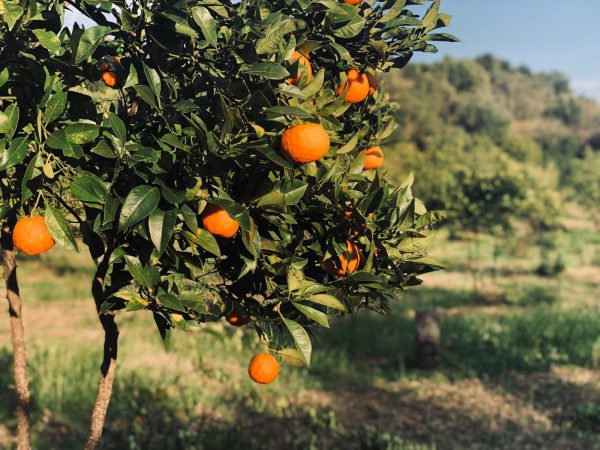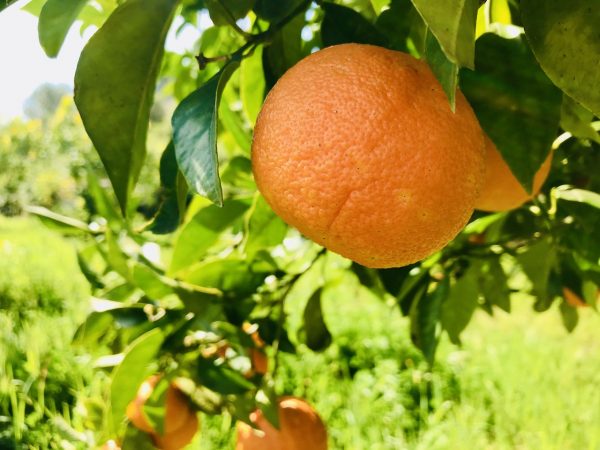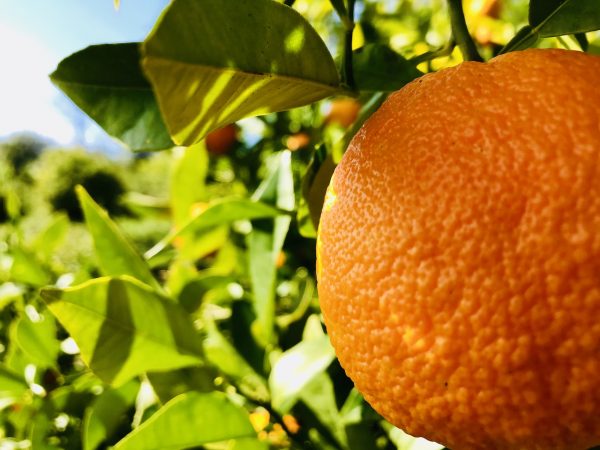Where Sicilian bitter oranges grows
Our organic wild orange garden in Noto, Sicily grows bitter oranges together with lemons, grapefruit, limes, and a variety of oranges: clementines, Valencia, mandarin, and more.
The superb oranges from the little island resemble hot fire on emerald branches – Abd al Rahman al Itrabanishi
Gli aranci superbi dell’isoletta sembrano fuoco ardente su rami di smeraldo – Abd al Rahman al Itrabanishi
There’s a lot of confusion about the definition of “Wild” or “Bitter” oranges. This is especially prevalent with the influx of marketing using this term for foodservice and retail products. There are many names for wild oranges, including:
- Citrus Aurantium (scientific name)
- Wild Orange
- Bitter Orange
- Seville Orange
- Sour Orange
The first name indicated in history for the Wild Orange is Huang Kan (China 220 AC), seeing as it is a fruit that originates from China. And in northern Europe it is currently referred to as Apfelsine, Apelsin, Apel’sin, known as an apple, ‘Apel’, from China, ‘Sin’.
Wild oranges are historically important to our land. For thousands of years, our fields were filled with only one varietal of citrus, and that was the prolific Wild Orange. The Wild Orange is bitter, low in natural sugar, and has a very flavorful rind — extremely different from the traditional Sweet Orange that dominates the market now.
Our organic wild orange garden in Noto, Sicily grows lemons, grapefruit, limes, and a variety of oranges: clementines, Valencia, mandarin, and more.

Little history of Bitter Orange in Europe
Sicily was introduced to diverse citrus varieties, including the Wild Orange during its domination by Arabs. Cultivation of the Sweet Orange that we know today only started after the new world discovery of America.
It was reported to be growing in Sicily in 1002 A.D., and it was cultivated around Seville, Spain, at the end of the 12th Century. For 500 years, it was the only orange in Europe and it was the first orange to reach the New World. It was naturalized in Mexico by 1568 and in Brazil by 1587, and not long after it was running wild in the Cape Verde Islands, Bermuda, Jamaica, Puerto Rico and Barbados. Sir Walter Raleigh took sour orange seeds to England; they were planted in Surrey and the trees began bearing regular crops in 1595, but were killed by cold in 1739 https://hort.purdue.edu/newcrop/morton/sour_orange.html

In Southern Italy, all citrus varietals are grafted on wild orange rootstock. Grafting is a technique in which a shoot or twig from one plant is inserted into the rootstock of another plant to serve as the base. This proven method allows us to leverage the strength and resilience of wild orange.
Today, you can find Wild Orange in Mexican markets called Naranja Agria. From China to the Mediterranean to North Europe to Mexico…how food travels!

“for 200 years at least the unique, earthy and aromatic taste of sour orange juice was as essential to an Italian banquet as ketchup is to fast food.” Helena Attlee – The Land where the lemons grow
Sicilian Wild Oranges
Sicilian origin citrus is one of the most famous in the world — this is because Sicily has the ideal climate for citrus. We focus on removing the monoculture approach, we promote diversity of citrus trees and wild herbs, and we take care to produce whole organic fruits, essential oils, and other natural personal care items.
